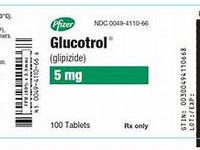Cytarabine

Cytarabine
CLINICAL USE
Antineoplastic agent:Acute leukaemias Lymphomatous meningitisDOSE IN NORMAL RENAL FUNCTION
High-dose (infusional) therapy: 1–3 g/m 2 every 12 hoursLow dose (conventional) therapy: 100 mg/ m2Lymphomatous meningitis: 50 mg (intrathecal) every 14–28 days. See SPC for more information, depends on formulationOr according to local policyPHARMACOKINETICS
DOSE IN RENAL IMPAIRMENT
GFR (mL/MIN)
DOSE IN PATIENTS UNDERGOING RENAL REPLACEMENT THERAPIES
IMPORTANT DRUG INTERACTIONS
Potentially hazardous interactions with other drugsAntipsychotics: avoid concomitant use with clozapine, increased risk of agranulocytosisADMINISTRATION
Reconstition
–Route
IV infusion
, IV injection, SC, intrathecalRate of Administration
IV injection: rapidIV infusion
: 1–24 hoursComments
Patients generally tolerate higher doses when medication given by rapid IV injection (compared with slow infusion), due to the rapid metabolism of cytarabine and the consequent short duration of action of the high doseOTHER INFORMATION
Cytarabine is concentrated in the liver. A major fraction of dose is inactivated by cytidine deaminase in the liver and other body tissues. After 24 hrs, 80% of dose has been eliminated either as the inactive metabolite or as unchanged cytarabine, mostly in the urine, but some in the bileElevated baseline serum creatinine (>1.2 mg/dl) is an independent risk factor for the development of neurotoxicity during treatment with high-dose cytarabine. Retrospective analysis implicates impaired renal function as an independent risk factor for high-dose cytarabine-induced cerebral and cerebellar toxicity. The incidence of neurotoxicity was 86–100% following administration of high-dose cytarabine to patients with CrCl <40 mL/min and 60–76% following administration to patients with CrCl <60 mL/min. In contrast, when patients with CrCl >60 mL/min received high-dose cytarabine, the incidence of neurotoxicity was found to be 8%, which correlates with the overall incidence of this adverse effect. Accordingly, it has been suggested that high-dose cytarabine should be used with .198 CYtARAbINecaution in patients with impaired renal function: GFR (mL/min) Dose45–60 60%30–45 50%<30 AvoidAnecdotally, an initial dose of 25% of the normal dose has been given to patients with a GFR<20 mL/min, with subsequent doses escalated according to tolerance.
See how to identify renal failure stages according to GFR calculation
See how to diagnose irreversible renal disease
Home








